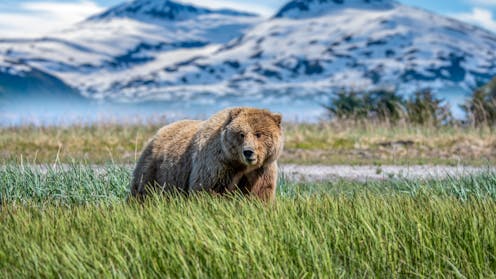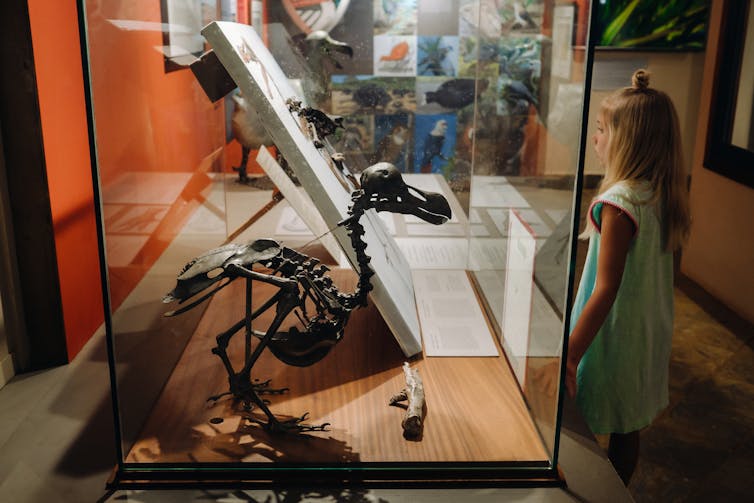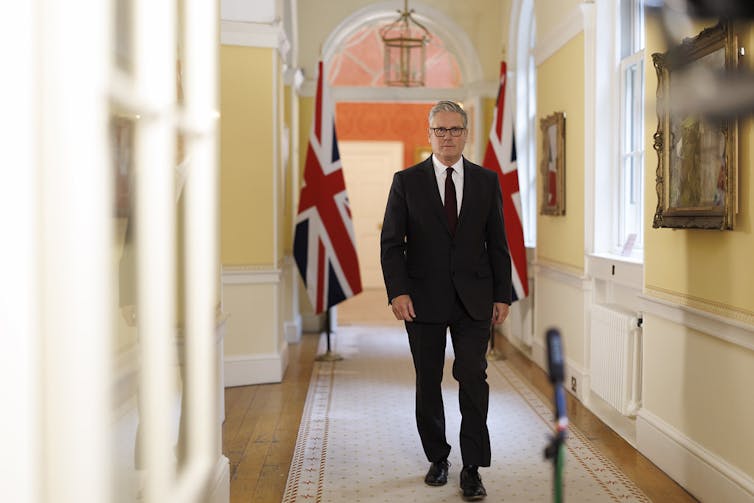Source: The Conversation – UK – By Helen Norman, Associate Professor at Leeds University Business School, University of Leeds
The UK government announced a landmark review of parental leave in July 2025. This responds to widespread concern about failings within the current policy framework.
Much of the discussion centres on calls for longer, better-paid paternity leave. The statutory entitlement is just two weeks paid at a low flat rate (£187.18 per week in 2025) or 90% of average weekly earnings, whichever is lower.
Eligible fathers can opt for shared parental leave of up to 50 weeks of leave and up to 37 weeks of pay – paid at the same statutory rate. However, this is reliant on the mother giving up some of her maternity leave entitlement so is rarely taken up.
It is important for fathers to have the opportunity to take longer leave than the statutory two weeks. Evidence suggests that early paternal involvement in childcare lays the foundations for sustained, hands-on fathering.
However, it is unclear whether small- and medium-sized workplaces can adapt to even modest changes to the current parental leave system, particularly if there are enhancements to the length of paternity leave.
Challenges for small businesses
Discussions about parental leave reform and its implications often focus on large organisations. But small- and medium-sized enterprises – defined as having fewer than 250 employees – account for 60% of UK employment. They make up over 99% of all businesses.
We are carrying out research exploring the transition to parenthood in UK small- and medium-sized enterprises, in collaboration with two charities: Working Families and the Fatherhood Institute. This research includes a survey of 2,000 small- and medium-sized enterprises and 2,000 employees, as well as 160 interviews, which involved talking to the same employers and employees two or three times over two years.
The UK government acknowledges the current unruly state of leave and pay entitlements, which “were never designed to operate as a single system”.
In line with previous work carried out by one of us (Bianca Stumbitz), our preliminary findings suggest small and medium businesses experience distinct pressures. These are related to this complexity along with their small size and limited resources.

Pixel-Shot/Shutterstock
For example, some of these businesses have minimal knowledge of what the entitlements are. Some find the parental leave policies too complex. And some struggle to find appropriate and affordable cover for staff who take up leave.
Nevertheless, many small- and medium-sized enterprises are committed to supporting their employees in their parenting journeys. Even small workplaces sometimes manage to voluntarily enhance pay entitlements. In most cases, though, they cannot afford to do this and not at equivalent levels as some larger employers. However, they often try to be supportive in other ways. In particular, this may be through offering increased flexibility to allow parents to better reconcile work and care.
Policy reforms should account for the specific challenges that parental leave poses to smaller organisations. These include the management of staff absences if employees take extended periods of leave. The redistribution of work can overburden remaining staff, especially if roles are skilled or specialist.
Employers are generally supportive of extended leave for parents. But it is clear that it needs to be provided in a way that does not harm smaller workplaces with scarce resources.
Preliminary findings from our study suggest that the small employers’ relief scheme (which allows some small and medium enterprises to claim back 108.5% of parental leave pay instead of the usual 92%) is underused. This is mostly due to small business owners’ lack of awareness of the scheme. Take-up of the programme could be increased through targeted awareness-raising campaigns, raising the eligibility threshold and reduced administrative complexity.
Flexibility in when and how parental leave is taken can be helpful for both employers and employees in small- and medium-sized organisations. This would enable employees to take leave in blocks, rather than an extended period of time, which may be easier for some employers to manage.
It is crucial that the UK’s parental leave scheme is overhauled, including more targeted and better paid parental leave entitlements for fathers. However, if reform is to be truly inclusive, small- and medium-sized businesses must not be an afterthought. They must be at the heart of the conversation.
What needs to change?
Changes to paternity leave could have positive and significant implications for families, gender role equality, workplaces and economic wellbeing. Research and international evidence suggests that leave should be longer, well paid and offered to fathers on a “use it or lose it” basis.
For this to work for small and medium enterprises and their employees, the government needs to provide bespoke support and resources to help businesses manage and meet their responsibilities. This could include improved small employer relief entitlements to help to cover statutory pay for parental leave.
We are always looking to hear about workplace initiatives on parental leave – and are producing a toolkit to help employers and employees in small- and medium-enterprises navigate some of these challenges.
![]()
Helen Norman receives funding from the Economic Social Research Council (ESRC).
Bianca Stumbitz receives funding from the Economic and Social Research Council.
Emma Banister receives funding from the Economic Social Research Council (ESRC).
– ref. Parental leave reform needs to consider small and medium businesses – https://theconversation.com/parental-leave-reform-needs-to-consider-small-and-medium-businesses-262366






